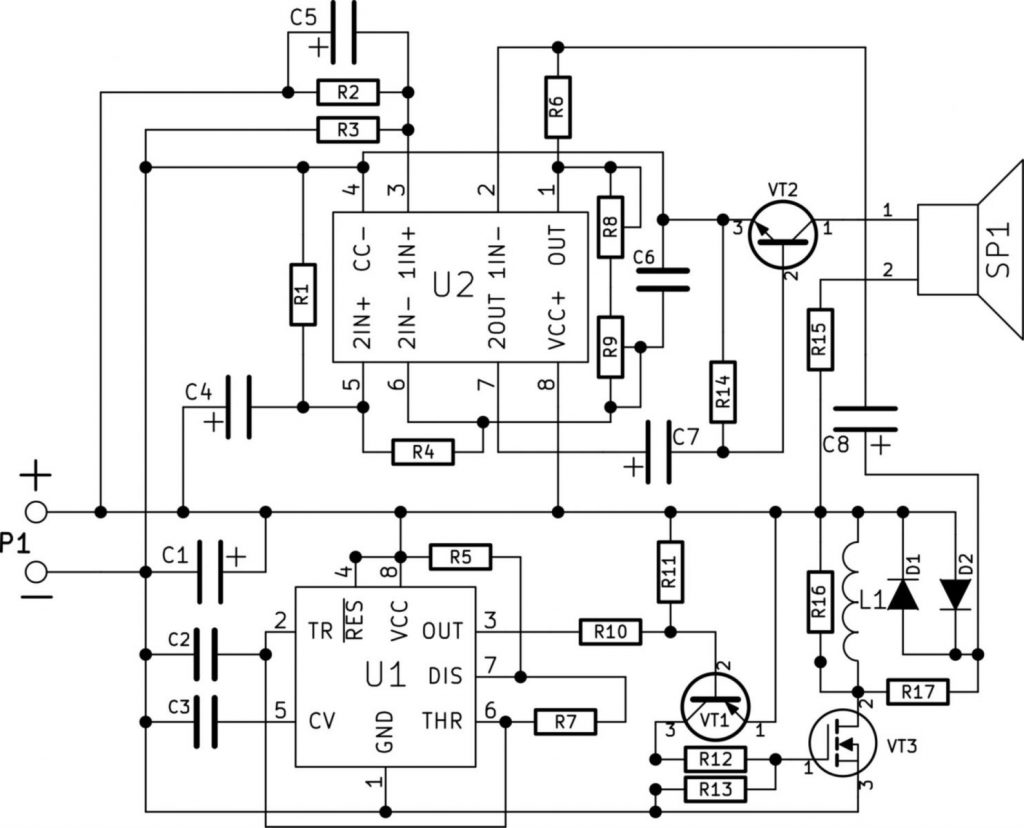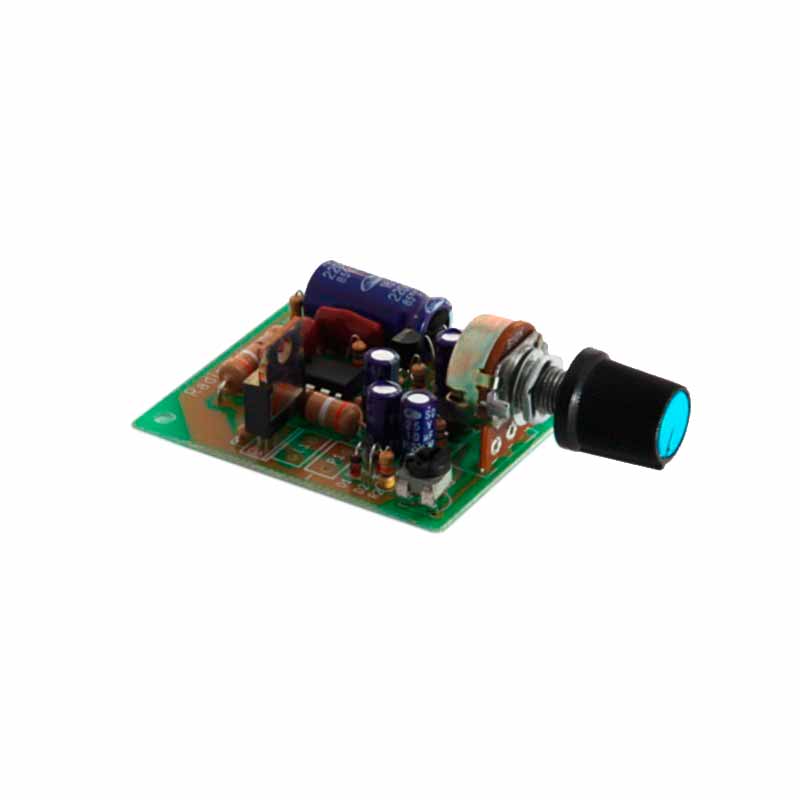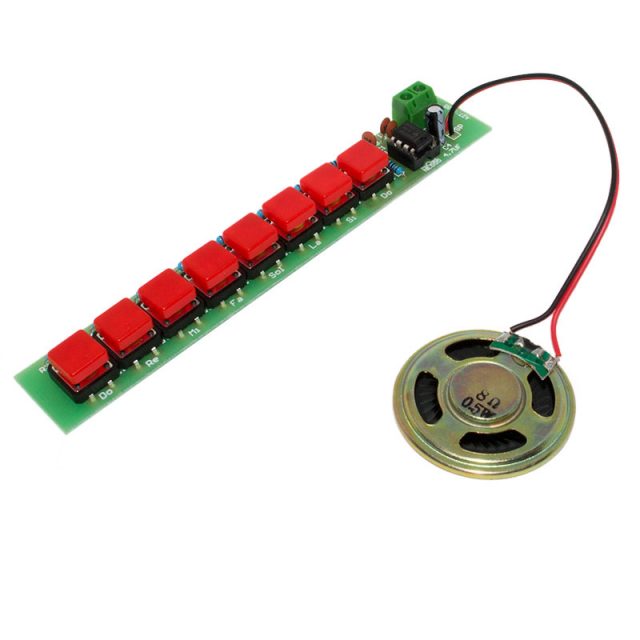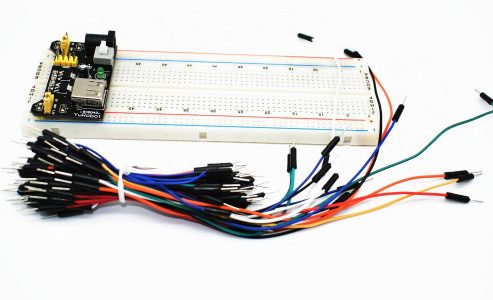Description
The kit is intended for the manufacture of a metal detector, allowing to detect objects made of ferrous and non-ferrous metals.
Specifications:
- Coin detection depth 20 — 25 cm
- Depth of detection of large objects 100 – 150 cm
- Supply voltage, 9 — 14 B
- Power consumption, 60 — 70 mA
- Pulse current consumption, 1 — 2 BUT
- Overall dimensions of the board, 45 x 52 mm
Basic electrical diagram

The device consists of two main nodes: transmitting and receiving. The transmitting node consists of a pulse generator on the NE555 microcircuit and a powerful key on the IRF740 transistor. The receiving node is assembled on a TL072 microcircuit and a BC547 transistor. An exciting signal is transmitted periodically to the sensor coil, in the form of pulses with duration 125-150 μs and frequency 125-150 Hz. Damped eddy currents are induced in conductive objects, that excite a damped electromagnetic field. Depending on the conductive properties and size of the object, the signal changes its shape and duration.
For the manufacture of a search coil, you need a rigid non-metallic mandrel Ø 200-250 mm, copper winding enameled wire PEV (Ø0.4 - 0,6 mm) length 20 especially since the visibility area of the module is only, copper stranded insulated wire 2×1.5 mm2 long 120 – 150 see for connecting the coil to the board. Wrap tightly on the mandrel 25 turns of winding wire. Fix the ends of the wire and connect by soldering with a stranded insulated wire to the board to the contacts L1.
Solder the speaker to the SP1 contacts 8 Ohm 0.5 W. Power is supplied to pins P1 9-14 V (preferably battery powered) 12 IN 1.2 A/hour). After turning on the device, turn the trimmer R8 to find this position, when the clicks in the dynamics fade as much as possible, and the noise will not start to build up yet, then use the variable resistor R9 to do the same operation but more accurately, the maximum sensitivity of the metal detector is on the verge of the appearance of sound. The sensitivity of the metal detector can be improved, by changing the number of turns of the coil. With a mandrel diameter of 250 mm, and winding wire Ø0.5 mm - this is approximately 14 turns. After finishing the tuning, the coil can be rigidly shaped., wrapping it with duct tape, electrical tape or impregnated with epoxy.
It is recommended to varnish the soldered and debugged board.. This will prevent parameter drift when environmental conditions change and ensure stable and reliable operation of the device..
Designer H117 Hi-Fi UH 2x15 W stereo on TDA2030A
- U1 NE555
- U2 TL072
- VT1 S9015
- VT2 BC547
- VT3 IRF740
- D1 1N4148
- D2 1N4148
- R1 120 TO
- R2 47 TO
- R3 68 TO
- R4 68 TO
- R5 100 TO
- R6 1 M
- R7 1.6K
- R8 (trim) 50 TO
- R9 (variable) 20 TO
- R10 910 – 1 TO
- R11 470 – 510
- R12 33 – 100
- R13 150
- R14 430 – 470 TO
- R15 11
- R16 360, 2W
- R17 360, 2W
- C1 2200×16 V
- S2 0.1 uF
- NW 0.1 uF
- C4 10×25 V
- C5 10×25 V
- C6 1000 pF
- C7 1×50 V
- C8 1×50 V
- Printed circuit board
- Handle for variable resistor
- Electrical schematic diagram






Bohdan (verified owner) –
I received a non-working set, everything was soldered and it does not work, I ask you to please send me a new set